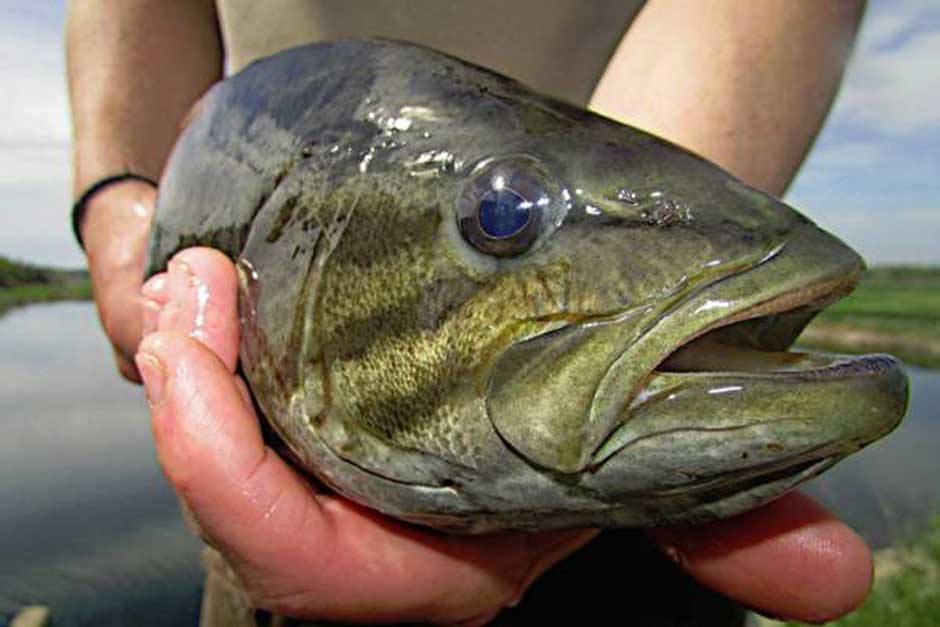Intersex Bass Found In U.S. National Wildlife Refuges
 Smallmouth bass. (Credit: Spencer Neuharth / U.S. Fish and Wildlife Service)
Smallmouth bass. (Credit: Spencer Neuharth / U.S. Fish and Wildlife Service)The United States has an expansive national wildlife refuge system, covering at least one refuge in every state, from Maine to Alaska. However, recent data shows that these refuges are still negatively impacted by human influence. One piece of evidence supporting this is the growing frequency of intersex fish found in refuges, areas that ought to be safe from such impacts.
Understanding the Frequency of Intersex Fish
A 2016 study conducted by the USGS sampled fish in 19 different U.S. national wildlife refuges, focusing specifically on largemouth and smallmouth bass. Their analysis revealed that a concerning amount of bass sampled had begun forming eggs (an intersex condition). In fact, about 85 percent of the 118 male smallmouths sampled in the study showed evidence of the existence of female reproductive parts. Likewise, 27% of the 173 male largemouth bass evaluated in the study showed similar characteristics.
The study’s main focus was to survey the refuges and not to analyze specific environmental conditions that could lead to the development of such traits. Though some studies have previously looked at water quality conditions more critically, many of these theories remain just that—a theory.
Though the newest study makes no claims to the chemicals that could have caused the fish sex changes, previous studies have implied that much of the blame can be assigned to pollutants. Some substances implicated by other studies include hormones, industrial chemicals and pesticides that mimic estrogen. These substances can easily make it into waterways through effluents, and agricultural and stormwater runoff. Even wastewater treatment plants could be contributing to the issue as birth control, and natural estrogens make it through the plant without much hindrance.
A previous USGS-led study in 2009 looked at the same issue in nine rivers in the U.S. Once again, the study reflected more of a survey rather than investigating a hypothesis. Still, the result affirms that this boom of intersex bass isn’t entirely new. Though the 2009 study yielded far smaller percentages, it was performed several years prior to the 2016 study. The findings of the 2009 survey support that the conditions causing these mutations may be becoming more common–particularly when considering the difference between the 2009 data and that of 2016.
So far, the evidence hints at the likelihood that smallmouth bass may be more sensitive to the sex-change substances than largemouths. But it’s not clear if the smallies are actually more easily affected by them or if smallmouth bass just spend more time in areas that receive higher concentrations of estrogen hormones.
Conclusion – More than Fish
These observations extend outside of the specific areas of research and beyond bass as well. A USGS press release states, “Intersex is a global issue, as wild-caught fish affected by endocrine-disrupting chemicals have been found in locations across the world.” Whatever is causing this prevalence must be occurring across regions. And while the cause may still be unconfirmed, researchers have continued to speculate the involvement of various sources, from natural estrogens to synthetic pharmaceuticals and agrochemicals.
In response to the news on climbing intersex bass populations, some have begun to worry about how these same conditions could impact humans living in the same areas. For now, these matters are all mere speculation as the same intersex frequency climbs associated with proximity to pollutants have not been observed in humans. However, there is still a great deal of information yet to be uncovered.
*U.S. National Wildlife Refuges tested in the 2016 study include: Patuxent Research, Susquehanna, Montezuma, Great Swamp, Wallkill River, Great Meadows, Assabet River, Rappahannock River Valley, Mason Neck, Back Bay, John Heinz, Erie, Cherry Valley, Great Bay, Lake Umbagog, Sunkhaze Meadows, Missisquoi, Moosehorn and Ohio River Islands refuges.
The U.S. Fish and Wildlife Service also helped in completing the 2016 study.



Pingback: FishSens Magazine | Impacts of Dilbit on Fish - FishSens Magazine